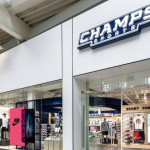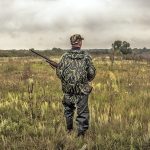The format that the New Sports Authority is using to report numbers will give it some cover over the next year as the positioning of a “lost quarter” for the old TSAs Q2 make it impossible to draw any clear full-year comparisons for the pre- and post-merger company.
Company management strongly emphasized an “apples-to-apples” comparison when it came to earnings and the exclusion of integration expenses that impacted the 2003 fourth quarter and full year, but sales comparisons were anything but “apples-to-apples” as they used figures for the combined entity this year against just the Gart numbers last year.
The merger closed in August of last year with timing that did not “require” the old TSA to file a second quarter 10-Q with the SEC. It should be interesting when it comes time to report the second quarter numbers and there are no 2003 Q2 reports from the old TSA.
There was some negative impact to the reporting format as a one contributor at The Motley Fool wondered why the company didnt spend some of its money on “clear communication with shareholders”.
While the contributor said he was sure that “the aim was not to obfuscate”, he published an opinion that it was “certainly the result” as he referred to “whoppers” such as the new TSAs claim that “Total sales for the 13 weeks ended January 31, 2004 increased 125%
” which he said requires a “sharp eye” by investors to realize they are not looking at a real apples-to-apples” comparison.
TSA shares were down 4.8% for the week to close at $39.46 on Friday.
But in reality it is really the comparable store sales results that tell the story as TSA moves to close overlapping stores, re-model the old TSA stores, open new formats and go through the re-branding process.
That key metric was less than stellar as comps for the year declined 0.7% for the combined entity (Gart for full-year and TSA for second half only) and inched up an anemic 0.2% in Q4 while much of their competition showed mid single-digit gains in the quarter. (See chart on following page). The small comp increase for the quarter was also expected by many to be a bit better due to the negative comps posted by the separate entities in the fourth quarter last year.
TSA said that sales were “strong” in Hunting, Apparel, Winter Equipment, and Footwear as a less promotional stance and a move away from BOGOs helped footwear increase sales (and margins).
The company was able to take advantage of some opportunities to expand the Winter apparel offerings in the Northeast markets, but was less successful pulling in Winter hardlines goods due to the timing of the merger. The impact in Winter Apparel was felt in 50 stores for this past season, but the company feels they can see impact in “over 80” stores “in the future”.
Apparel, which is about 27% of the total business, was said to be “very, very strong in the quarter across all segments”, but TSA called out Nike Dri-fit and Under Armour as two key contributors. Broader assortments from The North Face and Columbia are expected to go to 90 stores by the back half of this year and TSA sees moving “up in scale” in terms of quality in its assortments moving forward. New apparel fixture systems in the TSA stores are also expected to provide some lift in the coming year after an early eight-store test delivered mid single-digit comp gains in apparel.
Footwear is also expected to see improvement as TSA gets access to better Nike performance product and the new hybrid departments that feature both self-serve and full-service enable the retailer to expand product like Nike Shox, which is expected to roll out in June.
In their fiscal Q3 conference call, Nike indicated that the Sporting Goods channel is and will be a growing percentage of their overall U.S. business.
Marquee footwear product is expected to represent between 16% and 20% of TSA footwear sales by summer.
In hardlines, the Snowboard category was said to have “outperformed” the Ski category, which management said is due to a “change in trend”.
The new Golf Day departments, which make up about 6.0% of the square footage in the stores where they are placed, are expected to deliver about 12% of sales in those stores “within two years”. TSA has completed 19 of 50 planned Golf Day remodels.
Management said they see less competitive impact on their business in the Outdoor segments since they rely less on it than others. Total Outdoor represented less than 9% of their total business in Q4 with Hunting representing a “very low” single-digit percentage of the total business. The Camping element of Outdoor was said to be “a very strong business” for the company.
For the year, TSA said total sales fell short of its earlier estimates because they are closing stores faster than had originally been forecasted. TSA has closed 14 stores since the merger and now sees the total number at 26, up from the previous plan for 20 stores closures. The company opened six new stores in Q4 and 14 stores for the year and plans to open 23 more for 2004.
For the current first quarter, TSA expects to report net income of $8.7 million to $9.0 million, or diluted EPS of 33 cents to 34 cents per share, on sales in the range of $585 million to $590 million.
Comps for the current first quarter are forecast to increase approximately 2.0%, again seen as light since Gart was down 8.8% in last years Q1 and TSA was off 5.7% for the quarter. Again, TSA is forecasting on the conservative side due to the ongoing integration.
For the full year, the company is estimating net income in the range of $68.4 million to $69.7 million, or diluted EPS in the $2.57 to $2.62 range, on sales of approximately $2.6 billion. Comparable store sales to increase approximately 2.0%.
TSA is also planning to open a “couple of larger format stores this year”, with the first 50,000 square foot store opening across from the King of Prussia (PA) Mall in April. The other location was not identified, but they did say it would be “a real jewel” in TSAs portfolio.
>>> We see the concept of a “lost quarter” as a great idea to give the company cover as it goes through its integration exercise and plays with “what works” for the combined entity. The ability to hold off the Wall Street expectations until they get their house in order should result in a better long-term model













